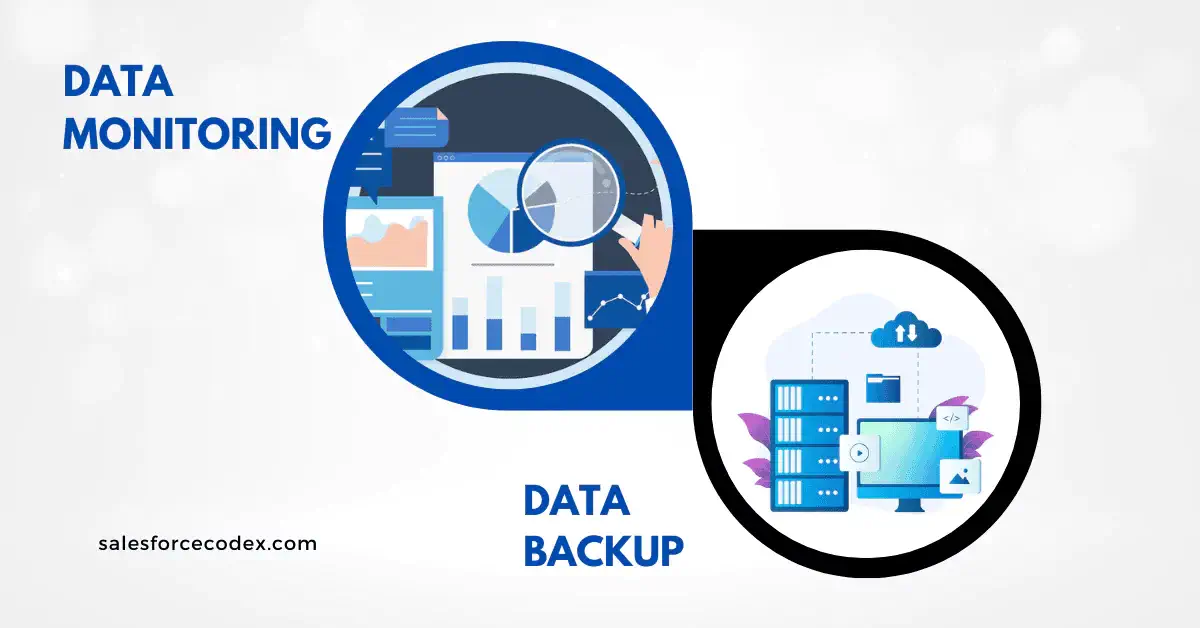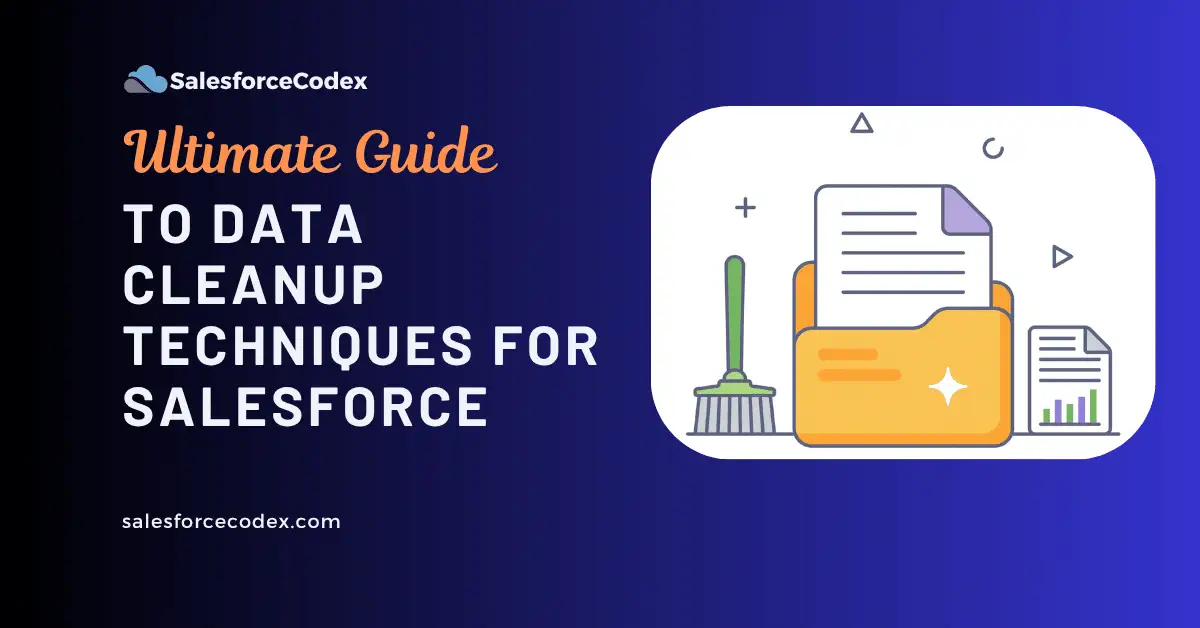Data is the backbone of Salesforce CRM success. As organizations scale, the volume of data grows rapidly. While much of this data is valuable, some becomes outdated, duplicated, or inconsistent over time. Issues like missing fields, stale contacts, and formatting errors can clutter the system, leading to poor performance, inaccurate reports, and a frustrating user experience. In this post, we’ll explore effective data cleanup techniques in Salesforce to improve org reliability, performance, and overall efficiency.
Maintaining a high standard of data quality is not a one-time task; it is an ongoing process and needs to be handled strategically. Let us explore the best practices for effective Salesforce data cleanup, including tools, planning strategies, and architectural insights.
1. Understand Your Data Landscape
Before starting with data cleanup in the Salesforce Org, we need to identify the impacted objects. Start by creating a checklist with the below details.
- List out all standard and custom objects and their business purpose.
- Review the record count for high-volume objects.
- Use Storage Usage and Object Manager to identify objects nearing limits.
- Identify data sources and integrations (marketing tools, legacy CRMs, and data loaders).
- Identify how data is entered in our system.
- Identify sensitive fields (PII, financial info).
- Identify customization that is not needed, like validation rules, flows, triggers, and integrations
Based on these lists, we can proceed further to clean up the data.
2. Define Data Quality Standards
Before data cleanup, we need to define the data quality standards in Org. We need to set measurable, enforceable rules that ensure data is reliable, usable, and consistent across Org. Below are key aspects to define data quality standards in Salesforce.
2.1. Completeness
- Ensure mandatory fields (e.g., Email, Phone, Account Name) are populated correctly
- Update with correct data, if it is empty
- Create validation rules, required fields, and dynamic forms to enforce entry.
2.2. Accuracy
- Data should be accurate and must reflect real-world information (e.g., correct contact details, valid postal codes).
- If required, integrate with third-party verification tools (like address/email validators).
2.3. Consistency
- Data should have standardized formats (e.g., phone numbers, state names, and naming conventions).
- Use picklists, global value sets to standardize values
- Remove inconsistent free-text fields where possible.
2.4. Uniqueness
- Avoid duplicate records across Leads, Contacts, or Accounts.
- Implement matching rules and duplicate rules to remove duplicate records.
- Use third-party deduplication tools for enhanced precision
2.5. Timeliness
- Data should be up-to-date and reflect current status (e.g., opportunity stage, active accounts).
- Use automation to mark stale records (e.g., not modified in 6+ months).
- Set retention policies for archiving or deletion of old data.
3. Identify and Remove Duplicates
Identify duplicate records in Salesforce objects. You can discuss the parameters to identify duplicates with business users. Once duplicate records are identified, remove them. Always perform this activity in the Sandbox first and then perform it in Production.
To avoid duplicate records in the future, use Salesforce’s Duplicate Management Rules & Matching Rules feature.
4. Leverage the Right Tools
Using the right tool is also important for cleaning data.
- Duplicate Management (Matching & Duplicate Rules): It prevents or flags duplicate records in real time. It is a basic real-time deduplication during data entry. It does not support bulk deduplication or automation of merges.
- Data Loader: Data loader used to mass insert, update, delete, or export Salesforce data. We can clean up all duplicate data using this tool. It works via CSV files, supports batch jobs, and allows scheduled cleanup operations.
- Data Import Wizard: This tool imports data with basic deduplication logic. It is best for simple imports and not suitable for complex or large-scale cleanup.
If your org has complex logic for duplicate checks, then use third-party tools like Cloudingo, DemandTools, DupeCatcher, RingLead Cleanse, Informatica Cloud, and Talend Data Quality for data cleanup.
5. Field Usage Review & Data Archival
We keep adding Salesforce objects and fields to enhance business requirements. Similar fields/objects become unused with a new tool or feature upgrade. These old or unused fields clutter page layouts and confuse users.
Use Cuneiform and FieldSpy AppExchange products to analyze field usage. Based on field usage, prepare a field/object deletion plan and mark for deletion through a staged process. If required, archive records before deletion.
6. Use Reports and Dashboards for Effective Data Cleanup
Reports and dashboards are powerful tools for identifying data quality issues. We can identify
- Blank or null values in critical fields (e.g., email, industry, phone).
- Potential duplicates that are not caught by standard rules.
- Inactive or stale records that are not modified in a defined time range
- improperly formatted values
As a Salesforce Architect, leverage reports and dashboards to ensure visibility, accountability, and progress tracking throughout the cleanup process. Once data is identified, perform cleanup using the data loader.
7. Backup Before Cleanup
This is a nonnegotiable step. We should never perform mass deletions or updates without creating a reliable backup. Whether it is a few records or mass deletion, we should always back up data.

We can use Salesforce Data Export Service, Data Loader, and third-party backup tools (e.g., OwnBackup, Spanning) to back up data. Document all information, like backup and rollback plans.
8. Create a Strategic Cleanup Plan
Cleaning up data in Salesforce without a proper plan can lead to data loss, user confusion, and performance issues. As a Salesforce Architect, it’s crucial to approach data cleanup like a project—with a clear roadmap, governance, and risk mitigation. A strategic plan helps you break down the process into manageable steps, involve the right stakeholders, and ensure long-term data quality.
You can start with a few object cleanups in the sandbox. Test functionality after cleanup. After a successful test, get stakeholder signoff, then deploy to production.
9. Assign Data Ownership and Governance
A common mistake in Salesforce data cleanup is not defining who is responsible for maintaining clean data. Without clear ownership, even the best cleanup efforts can fail to sustain. Data Governance ensures that your organization has the right structure, rules, and people in place to keep data accurate, secure, and useful.
As a Salesforce Architect, your job is to formalize this ownership model, establish policies, and align teams with governance practices that scale. Educate users on the importance of data, so that they will also work with proper governance.
10. Automate Hygiene Checks
Once the data is cleaned up, we need to periodically monitor anomalies. Setup
- Scheduled flows to find and flag bad data in the org.
- Validation rules that prevent errors at entry.
- Custom metadata to manage dynamic cleanup rules. Use it in the above-mentioned schedule flow.
- Error notifications and in-app guidance to alert users in real time.
Summary
While data cleanup may not be the most exciting task, it delivers some of the greatest ROI in any Salesforce implementation. As a Salesforce Architect, your responsibility is to:
- Align strategic goals with technical execution
- Guide and educate users and stakeholders
- Build scalable solutions that remain compliant over time
Clean data fuels smart decisions. Don’t wait for messy records to create bigger issues. Start small, build momentum, and treat data quality as a continuous process, not a one-time fix.
Need help with data cleanup?
Contact us at salesforcecodex@gmail.com with your use case or order at Fiverr.
Related Posts
- Understanding the Salesforce Well-Architected Framework to Enhance Business Outcome
- Best Code Analysis Tools For Salesforce Development
- Steps for Successful Salesforce data migration
- Build Scalable Solutions with Salesforce
- Optimize Salesforce Reports and Dashboard
- How to Elevate Your Career to Salesforce Architect

